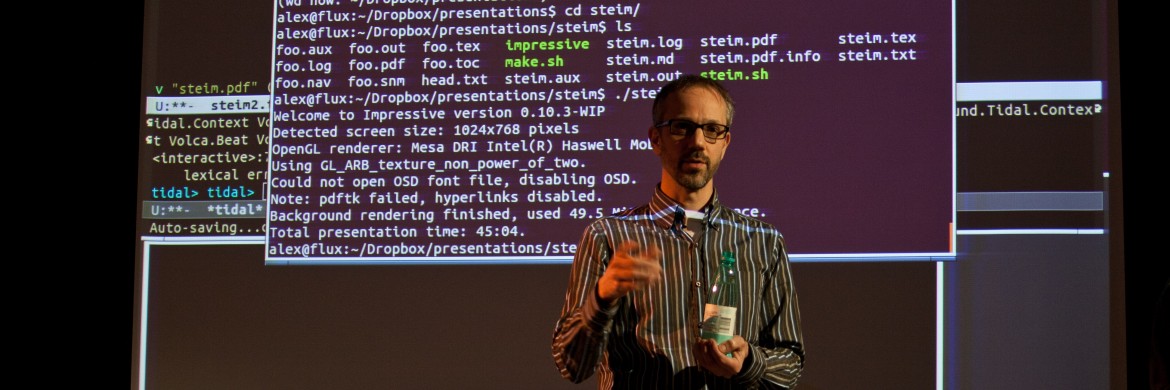The FIBER+STEIM Algorave and live code weekend is sadly over, it was masses of fun. There is a great writeup here, including a short video by the FIBER crew, embedded below:
https://www.youtube.com/watch?v=CEXvk51IdEo
The weekend included some talks on the Sunday, and Marcel Wierckx has provided a transcript of his. Here’s the introduction:
First, I want to acknowledge what a thrill it is to be giving the keynote for this Fiber event at STEIM. As most of you probably know, STEIM was the venue for the very first live coding performance ever: a half-hour performance by Ron Kuivila in 1985 using the programming language FORTH, which, incidentally, ended with a system crash[1].
My first exposure to Live Coding was in 2005, and I was immediately smitten. At the time, I was heavily involved in performing live computer music, and the whole idea of Live Coding suddenly put everything I had accepted as ‘the rules’ for performing live electronic music under a microscope. I was reminded of Robert Henke’s famous line: “The last century was about how to create electronic art. This century is about how to perform it.”
All aspects of live performance in the broadest sense – talent, skill, virtuosity, risk, concentration, excitement, transience – come together in Live Coding in a way that no other performance art can boast.
Most performance arts can be considered as existing ‘within brackets’ (in the literary sense): the performance is part of the story and yet separated from it. The brackets act like a thin shell between the larger narrative in which the audience exists and the smaller narrative in which the performer exists. The most exciting modes of performance however do not have this shell.
Think of the most memorable jazz improvisation you’ve ever seen live. It probably affected you because you shared the same cognitive space as the performer, even if it was just for a moment. Either you were invited in to their brackets or they escaped theirs.
The primary appeal of Live Coding to me has always been this sharing of cognitive space. It’s only possible because Live Coding performances lack the brackets we normally associate with performance arts. When Live Coders perform well it is as if there is a magnifying glass upon the reality of the moment: the fragility, the excitement, and the authenticity of the performance become fully transparent and sharply focused. A good Live Coder does not need to get ‘into character’ before a performance– the Live Coder’s performance is the person.
The full text of Marcel’s talk is available here: http://lownorth.nl/text/FiberKeynoteMarcelWierckx.pdf



the video above does not exist
Hmm strange, there’s a different video here:
http://motherboard.vice.com/nl/read/algorave-coden-in-de-club